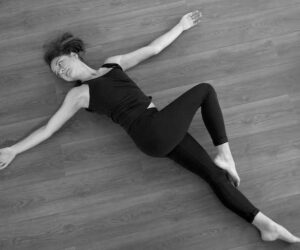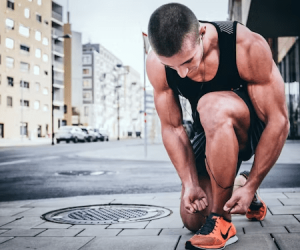I’m not a blogger, I’m not a journalist, I just want something to share about how Yoga changed my life.
Letter from a reader sharing how Yoga changed his life and which yoga poses for Neck pain and Spondylosis are the reasons for that.
I was born in 1988, among the first computer/technology/internet/gaming obsessed generation, having a normal life and of course not listening to the parents when they were yelling “sit straight or straighten your back,” etc.
After my 25th birthday, I started having pain in my neck and upper back. I also noticed that I had something that looked like a small bump on my upper back. After months of saying ‘it’s nothing,’ I started noticing it more and more, and the pain wasn’t going away. I asked a friend that worked in a gym to suggest a masseur to “fix” me, and after his first touch of my neck and back, he diagnosed me with spondylosis and scoliosis. Later on, I visited a doctor to confirm it. I was shocked. After the doctor confirmed what the masseur previously said, I dived into the internet to find a solution. I was looking for an affordable solution, and that’s when I came across Yoga.
It’s been 4 years since my first yoga exercise, and my life has changed. I don’t have pain anymore, and my back has drastically straightened. My neck pain is gone, the bumps on the neck and back are not completely gone, but I have prevented them from going from bad to worse.
I want to share the yoga poses for neck pain and spondylosis with you that helped me tremendously, and if you are like me, having a problem also with scoliosis, you can read my other list here.
I hope these exercises will help you as they helped me.
Cervical spondylosis is when the spinal disks in the neck begin to lose their makeup; the disks dehydrate and shrink. Cervical spondylosis usually starts with stiffness in the neck, and it can cause significant pain as the spinal canal begins to narrow and pressure is placed on the nerves. This common condition worsens with age. Unfortunately, today’s office work culture with the excessive sitting hours leads to develop these problems already at a young age. There are no medicines to cure cervical spondylosis.
However, with some easy yoga poses (asanas), we can manage the pain and slow down the process. Keeping the body mobile and strengthening the muscles is very important. The key is consistency, so try to do these simple yoga poses for neck pain and cervical spondylosis daily.
1. Sun Salutation (Surya Namaskar) – Basic yoga for neck pain
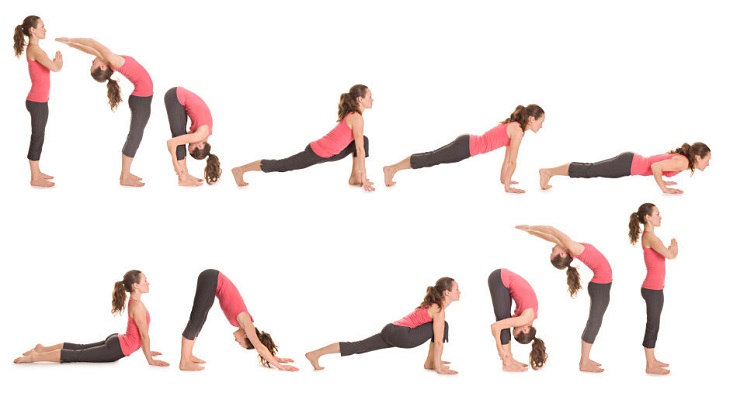
via yoganonymous.com
Sun Salutation or Surya Namaskar is a sequence of asanas performed as one continuous exercise. It helps you gain a strong and flexible spine and eases neck pain, shoulder pain, and cervical spondylosis. Practicing at least three Sun Salutations every morning – or whenever you have time – is a wonderful way to awaken your body. After a few days, you will feel stronger, and your body will get more capable of doing things than before. Click here for a short video on how to do Surya Namaskar.
2. Cobra Pose (Bhunjangasana)

This asana strengthens the whole spine, stimulates abdominal organs, and also helps relieve stress and fatigue. Lie down on your stomach, bring your hands, palms down and place them next to your shoulders. Bring your elbows tucked into your body. Take a deep, slow breath and slowly raise your body onto your elbows. Stretch your neck backwards and hold this position for a few breaths. Avoid straining your back! This is not just Yoga for neck pain. Also, people with back paint will find this yoga pose helpful.
3. Knee-to-Chest Pose (Pawanmuktasana)

This pose is also called the wind-release pose because it releases digestive gases from the intestines and stomach with great ease. Lie down with your back on the floor, take a deep breath and as you exhale, bring your knees towards your chest, clasp your hands around your legs and lift your head off the floor. Alternatively, you can do this pose with just one leg at a time, keeping the other leg stretched on the floor.
4. Half-Locust Pose (Salabhasana)

This gentle back extension is highly beneficial in cervical pain, lumbago, and sciatica. Lie down on your stomach, keep your chin up and spread your hands straight out in front of you. Breath in and slowly raises your right hand and left leg up and hold this position for a couple of seconds, and with sending the breath out, release back on the floor. Repeat this movement with your left hand and right leg. Finally, lift both your legs and hands off the ground and balance for a few seconds.
5. Crocodile Pose (Makarasana)
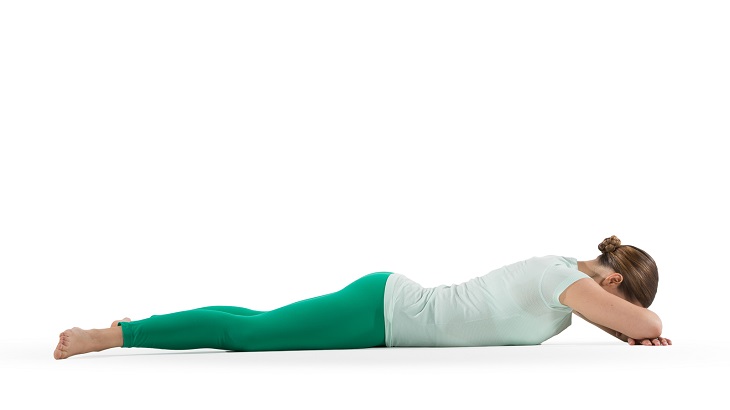
via yogainternational.com
Makarasana or the Crocodile pose is used for relaxation. This asana is good for the spine to resume its normal shape and releases the spinal nerves’ compression. Lie down on the floor on your stomach with your hands folded under your head. Stretch the legs as far as possible; the toes should point outwards. Relax the whole body and breathe normally and slowly. Stay in the pose for 5 minutes.
6. Cat Pose (Marjariasana)
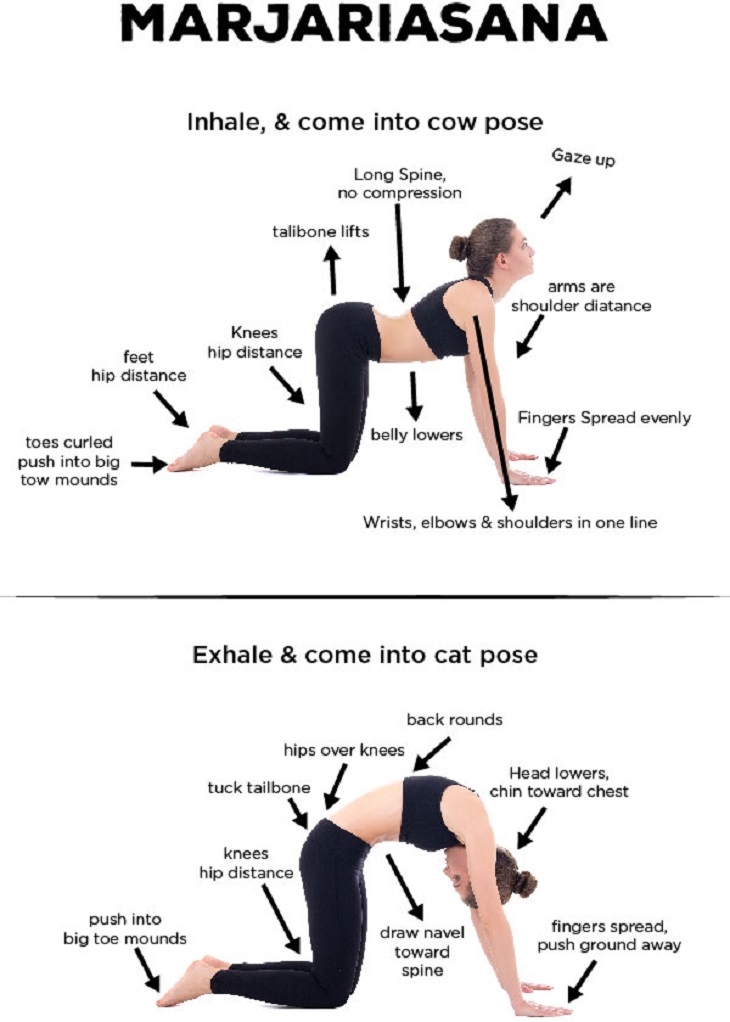
Marjariasana also called the cat pose, gives the body a great stretch. It is excellent for improving the spine’s flexibility as it helps to loosen up the vertebral column. The cat-cow pose is highly beneficial for those who have rigid spines, spondylosis, and neck pain. This asana gently stretches and stimulates the spinal nerves.
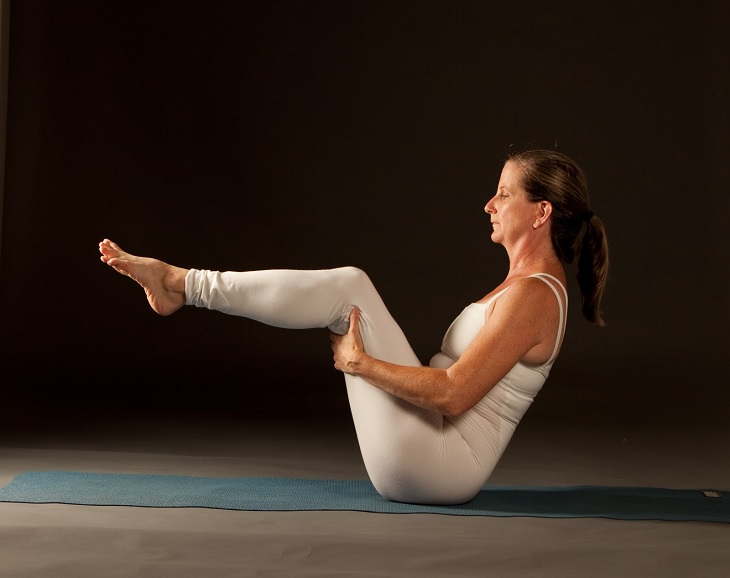
via www.caloriesinandcaloriesout.com
Ardha navasana or boat pose is effective for people with cervical and back problems. Besides, it can improve chronic indigestion, constipation and it is also an abdominal strengthener. Sit on the floor with your legs straight in front of you. Exhale, bend your feet, and lift them off the floor. Make sure that the thighs are angled about 45-50 degrees relative to the floor. Stretch your arms alongside the legs and hold the pose for a few breaths.
8. Fish Pose (Matsyasana)

Fish pose or matsyasana stretches and stimulates the neck muscles and strengthens the muscles of the upper back and back of the neck. It is a highly beneficial pose for people with cervical spondylosis. This posture is also excellent for relieving congestion. Sit on the floor with your legs stretched out, slowly relax backwards onto the elbows, letting the head dangle back between the shoulders. Stay in the pose for a couple of breaths and breathe deeply in and out.
9. Cow Face Pose (Gomukhasana)
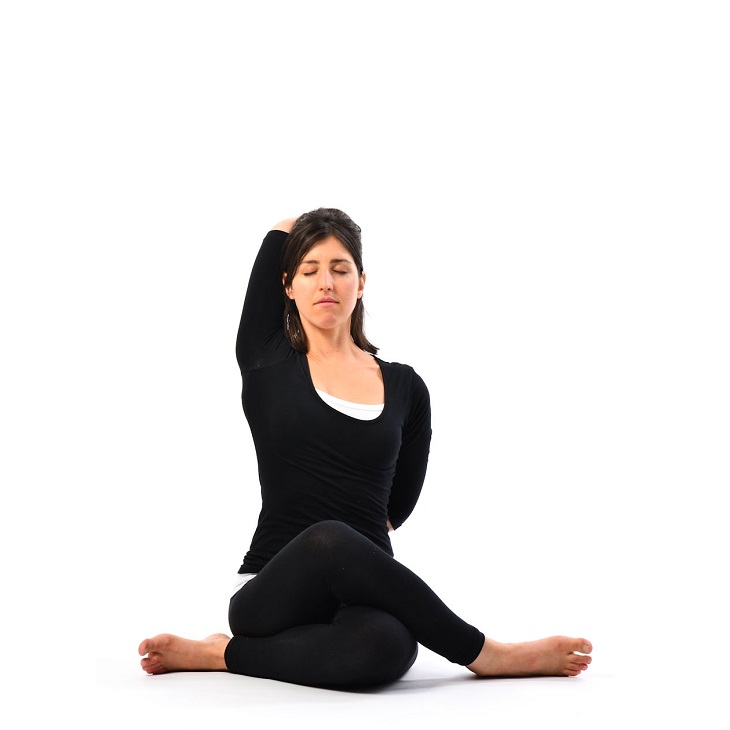
This pose stretches the muscles of the upper arms and also the muscles deep within the shoulders. Extend your right arm up next to your right ear and your left arm down close to your left side. Bend the left arm across the back and up so that the fingers reach the mid-back between the shoulder blades. If you can, allow the fingers to connect; if not, use a strap. Make sure your back is straight and stay in the posture for 8–10 breaths.
10. Child’s Pose (Balasana)
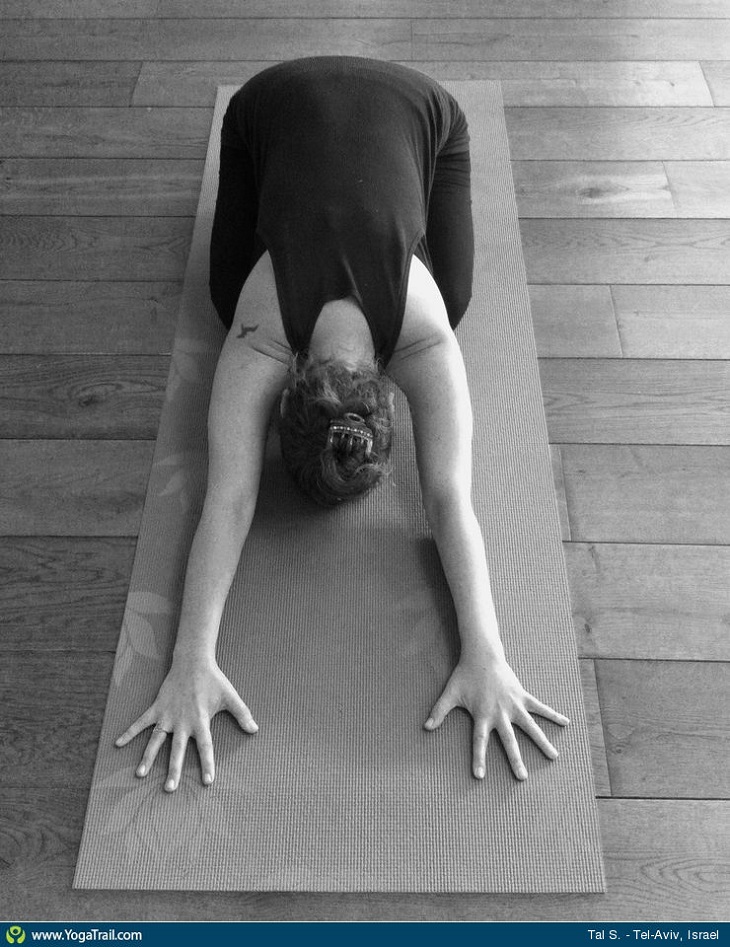
Balasana or Child’s Pose is resting. You can take a break here and stay in this pose as long as you feel like it. By relaxing your head on the ground, this posture relieves back and neck pain. It also calms the brain and helps relieve stress and fatigue. Kneel on the floor and touch your big toes together. Sit on your heels (if you have difficulty, place a folded blanket between your back thighs and calves) and open your knees hip-wide. Lay your torso down between your thighs and put your forehead on the ground.


